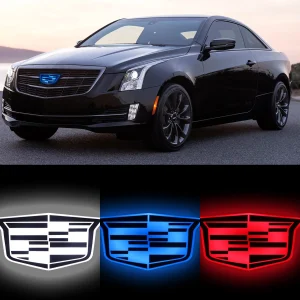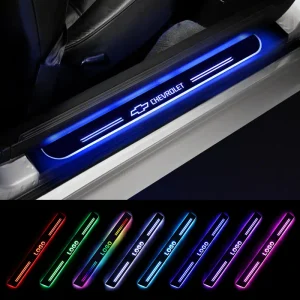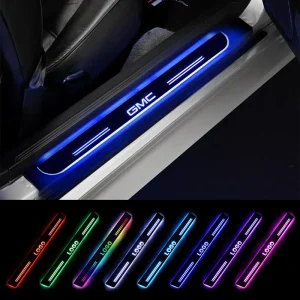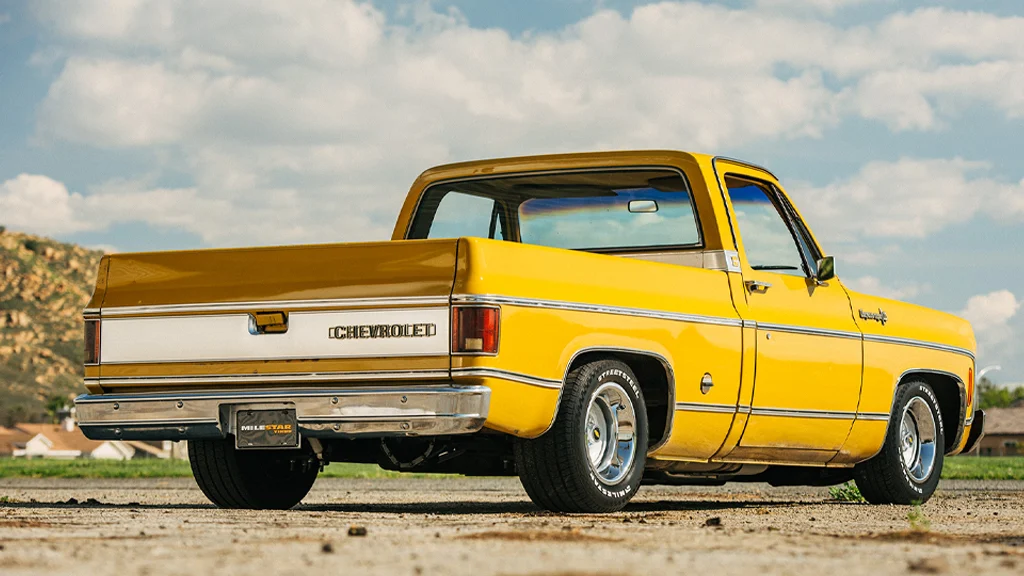The perfect fusion of rugged utility and comfort that defined an era of American trucks.
The Chevrolet C20 Cheyenne represents a pivotal moment in American automotive history, when pickup trucks began their transformation from purely utilitarian work vehicles into the comfortable, stylish rides we know today. Born in the early 1970s, the Cheyenne trim offered a blend of brute-force capability and surprising refinement, creating a legacy that continues to captivate collectors and enthusiasts. This is the story of how a simple option package became an icon.
The Historical Stage: The “Action Line” and “Rounded Line” Generations
The C20 Cheyenne’s story is told across two legendary generations of GM trucks.
The Second Generation (“Action Line,” 1967-1972) – The Debut
The Cheyenne nameplate first appeared in 1971 on the second-generation C/K series, known as the “Action Line”. This generation was already celebrated for its crisp, clean styling that moved away from the rounded designs of the early 60s.
The introduction of the Cheyenne and, later, the Cheyenne Super trim levels was a bold statement. It signified that Chevrolet was serious about catering to buyers who wanted more than just a basic hauler. These trucks were “rolling proof that some truck buyers indeed preferred their pickups to play as well as work”. They came loaded with car-like comfort features, including plush carpeting, bright exterior and interior trim, and other amenities that made daily driving a pleasure.
A major technological leap came in 1971 when front disc brakes became standard equipment, a significant improvement in safety and stopping power for the heavy-duty C20 model. Under the hood, these trucks were often powered by mighty big-block V8s, such as the 402 cubic inch engine, badged as a 400.
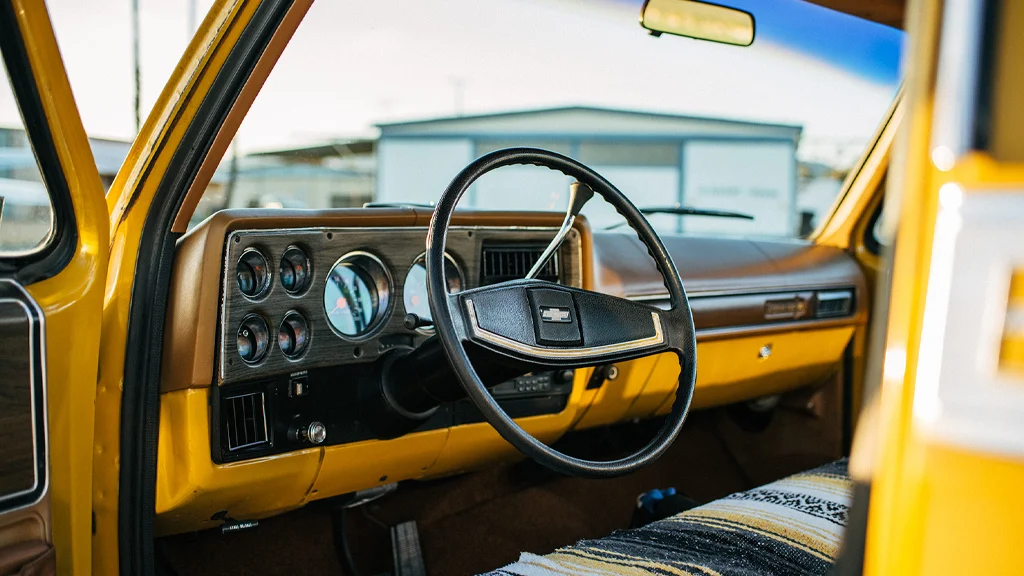
The Third Generation (“Rounded Line” or “Square Body,” 1973-1991) – The Icon
In 1973, Chevrolet introduced the third-generation C/K series. Despite GM’s official “Rounded Line” name, these trucks would become forever known as “Square Bodies” due to their straight-lined, boxy, and rugged appearance. This was a complete redesign featuring a more comfortable cab with curved side glass and a dashboard that centered gauges and controls closer to the driver.
The Cheyenne trim continued as a premium offering, cementing its status as a top-tier model. For the 1975 model year, the Cheyenne Super was replaced by the Silverado as the top trim level, marking the beginning of another legendary nameplate.
The table below summarizes the key differences between these two foundational generations.
Second Generation (“Action Line”, 1967-1972)
Body Style: Sharp, straight lines; known for its crisp styling.
Cheyenne Intro: 1971, as a new premium trim level.
Cab Comfort: Improved interior over previous generations.
Major Innovation: Standard front disc brakes (from 1971).
Third Generation (“Square Body”, 1973-1991)
Body Style: Boxy, rugged look; widely known as the “Square Body.
Cheyenne Intro: Continued as a premium trim; top model until Silverado replaced it in 1975.
Cab Comfort: Major upgrade: more comfortable cab, curved glass, better dashboard layout.
Major Innovation: A completely redesigned body and chassis that lasted 18 years.
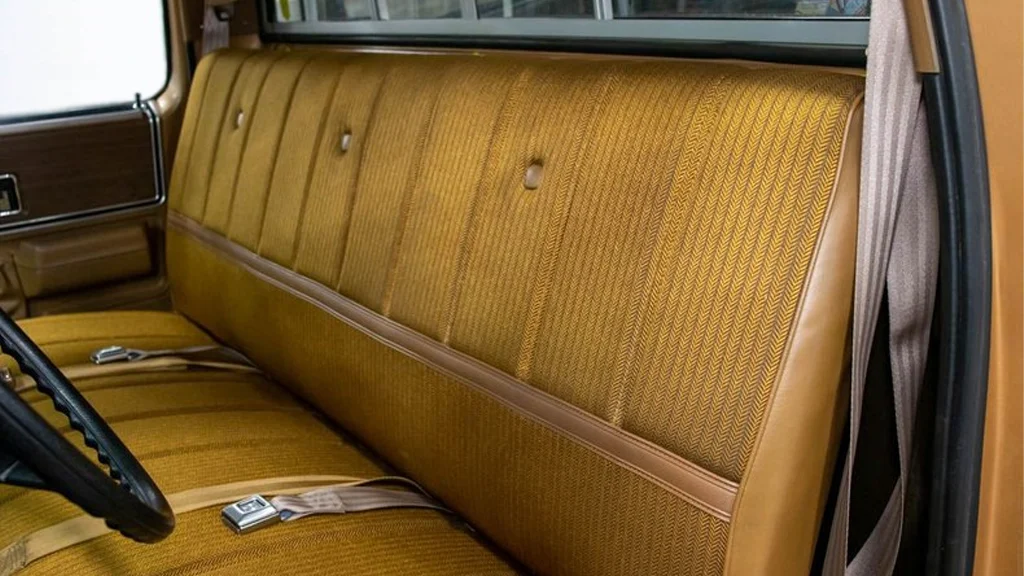
A Story on Wheels: The “YelLOWstone” 1973 Cheyenne Super 3+3 C20
A perfect example of the Square Body Cheyenne’s enduring appeal is a truck named “YelLOWstone”. This 1973 Cheyenne Super C20 is not just any truck; it’s a crew cab long-bed (3+3), making it a “gargantuan” vehicle even by today’s standards.
What makes this truck special is how owner Ronnie Wetch has preserved its soul. Instead of applying a fresh coat of paint, he maintained the truck’s original, weathered Ochre Yellow and white finish, embracing its history and giving it maximum retro appeal. However, underneath its classic skin, Yellowstone is a modern performer.
- Modernized Stance: The truck was significantly lowered with an airbag suspension system, making it easier to access the vintage camper unit mounted on the back and giving it a sleek, contemporary profile.
- Updated Drivetrain: While it retains its original 454 cubic inch big-block V8, the engine was rebuilt and upgraded with modern fuel injection (Holley Terminator EFI) for better reliability and drivability. The original transmission was also swapped for a modern 4L80E 4-speed automatic, vastly improving fuel economy on long trips.
- Family Comfort: The interior was restored with period-correct materials but includes a modern Kicker sound system, ensuring it is as comfortable for family adventures as it is awesome to look at.
Yellowstone exemplifies the modern Square Body ethos: respect the classic exterior while seamlessly integrating modern performance and comfort.
The Enduring Legacy of the C20 Cheyenne
Today, the C20 Cheyenne, particularly the well-preserved or expertly restored examples, is a highly sought-after classic. Its value has steadily appreciated, with models in excellent condition commanding significant prices.
The Cheyenne’s legacy is profound. It demonstrated that there was a massive market for a pickup truck that didn’t force you to choose between capability and comfort. It set the standard that every modern truck now follows, blending workhorse toughness with a comfortable, well-appointed interior.
For enthusiasts, the C20 Cheyenne represents a tangible connection to a golden era of American trucks—an era of simple, robust engineering and timeless style that continues to turn heads and win hearts decades later.
Do you have a story about a classic Square Body or Action Line truck? Share your experiences in the comments below!

